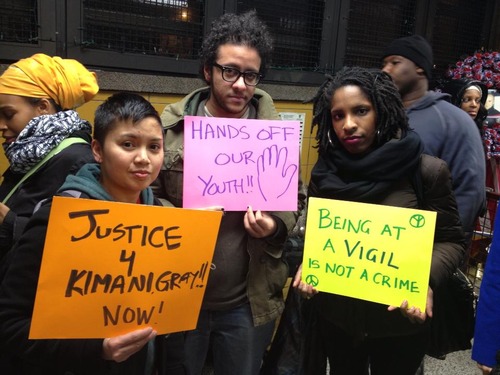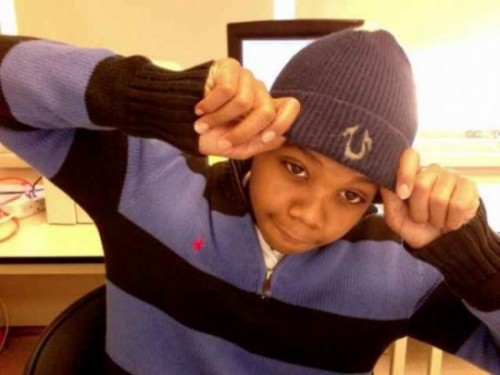There’s Something About Kimani…
It’s been a couple of weeks (at least) since I first learned that the NYPD had killed another 16-year old black boy in Brooklyn. His name was Kimani Gray. I admit that I took note of the incident without reading about it in any depth. I’ve been dealing with a lot lately in my work and in my life. I didn’t want to dwell in the grief of another young black life snuffed out in its prime. It hits too close to home.
I tried to avoid any photographs of Kimani Gray. I preferred that he stay amorphous and abstract. Looking into his eyes might mean that I would “recognize” him. I don’t want any more reminders of how precarious the lives of young people in my family and life are.
Then the youth of Flatbush took to the streets for several days to express their anger at state-sponsored violence, in this case police murder. They protested and I was forced to pay attention.
This week, the Malcolm X Grassroots Movement (MXGM) released a comprehensive report titled “Operation Ghetto Storm” about the extrajudicial killing of 313 black people by police, security guards, and vigilantes in 2012. One might think that this report would garner significant attention, right? Well, it hasn’t and we should not be surprised.
The report declares that: “Every 28 hours in 2012 someone employed or protected by the US government killed a Black man, woman, or child!” In the preface of the report, Kali Akuno writes:
“Operation Ghetto Storm is a window offering a cold, hard, and fact-based view into the thinking and practice of a government and society that will spare no cost to control the lives of Black people. What Operation Ghetto Storm reveals is that the practice of executing Black people without pretense of a trial, jury, or judge is an integral part of the government’s current overall strategy of containing the Black community in a state of perpetual colonial subjugation and exploitation.”
Reading these words, it’s easy to see why the report wouldn’t be embraced and covered by the mainstream press. It specifically calls out racism and is unapologetically interested in valuing and grieving the loss of black life. I urge everyone to take the time to read the report even though it is emotionally difficult to get through.
I resisted focusing on Kimani as a person: a son, brother, friend. There is something to be said about buffering ourselves against pain. It’s emotionally safer to focus on a symbol than on an actual person. To think of Kimani as flesh and blood is to invite more grief. Then I read a letter written by Kimani’s principal expressing his school community’s devastation at his loss. I had a physical reaction when I read the following sentence: “My hope is that as a community we can agree that the death of anyone so young is tragic.” Why did the principal feel the need to remind people about this? It’s because, in fact, we don’t agree “that the death of anyone so young is tragic.” There is a hierarchy of death and the deaths of black youth are deemed par for the course. They are the casualties of an undeclared war on black bodies that has been ongoing for generations.
I cannot avert my eyes from injustice even as I try to on occasion. I must be a witness. So I searched the internet and found a photograph of Kimani and I made myself look.
Sure enough, I did “recognize” him and the pain of that recognition is real. There is nothing alien, foreign to me about this young man. There’s something about Kimani that I find familiar and I mourn his loss. Next year, when the MXGM puts out the 2013 version of its report cataloging extrajudicial killings of black people, Kimani Gray’s name will appear on the list. I promise to take note and to allow pain and grief to flow through me. I will continue to bear witness…


